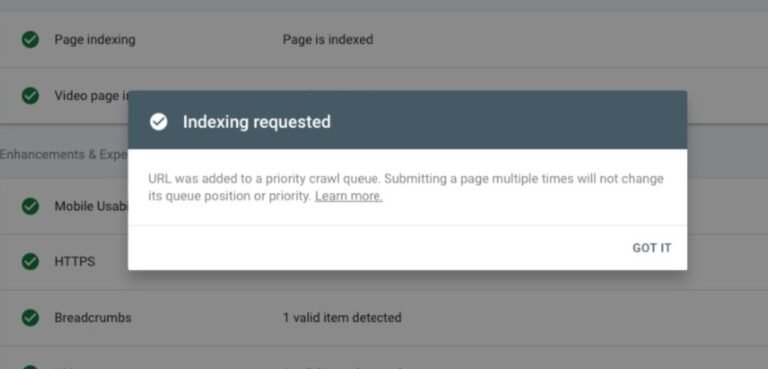Keeping your website updated and performing well in search engine results can be a vital part of maintaining your online presence. One of the most effective methods to ensure that your new content or recent updates are reflected in Google Search is to Request Google Reindex My Site. Whether you have a fresh blog post, updated product pages, or restructured internal links, Google reindexing can significantly impact how your pages rank. Understanding when and how to request a reindexing can make a difference in boosting traffic and gaining visibility.
Why Is Google Reindexing Important?
Google’s indexing process determines how your site appears in search engine results. When your site is not indexed correctly or updated content isn’t recognized, your chances of ranking high in search results are significantly reduced. Frequent updates, changes, or improvements to your website can sometimes take weeks to reflect naturally in Google Search. By submitting a Request Google Reindex My Site, you can accelerate this process and ensure your content achieves fresh rankings in a timely manner.
How to Request Google to Reindex Your Site
If you’ve made significant updates to your website and want those changes to reflect quickly in the search results, here’s a step-by-step guide to initiate a reindexing request:
1. Use the Google Search Console
Google Search Console is one of the primary tools for submitting a reindex request. By using the URL Inspection Tool, you can request reindexing for specific pages. Here’s how:
- Go to Google Search Console and log in.
- Enter the URL of the page you updated or added to your site in the search bar.
- Click on “Inspect URL.”
- If the page is not indexed, you’ll see an option to “Request Indexing.”
- Click the button to submit your request.
This simple process helps Google recognize your content updates and prioritize them for crawling.
2. Ensure Technical SEO Is Optimized
Before submitting your Request to Google Reindex My Site, it’s essential to optimize your website’s technical SEO. Factors like clear site structure, proper use of canonical tags, and fast loading speed improve how Google’s bots reindex your site. If there are errors or broken links, they could delay the reindexing process.
3. Update Your XML Sitemap
An updated XML Sitemap provides a comprehensive list of all the pages on your website that you want Google to crawl and index. Ensure that your sitemap reflects the most recent changes and submit it via Google Search Console. Google often prioritizes URLs included in the XML Sitemap.
4. Use Internal Linking Strategically
Internal links help guide Google bots through your site effectively. By adding relevant internal links to recently updated or newly created pages, you can encourage faster crawling and indexing. This can complement your efforts to Request Google Reindex My Site and ensure your pages are not overlooked.
5. Leverage Social Media and Backlinks
Sharing updated content on social media platforms and building external links can signal to search engines that your site is active and valuable. These signals encourage search engines to crawl your site and potentially expedite the indexing process.
Best Practices to Enhance Google Indexing Efficiency
To make your Request Google Reindex My Site as effective as possible, consider these additional tips:
- Write High-Quality Content: Compelling and keyword-rich content ensures that Google views your site as a valuable resource.
- Use Structured Data Markup: Leverage schema markup to help Google understand your page content better.
- Avoid Duplicate Content: Keep your site free from duplicate content that may confuse search bots.
- Monitor Site Performance: Use tools like Google Analytics and Search Console to identify and fix any errors promptly.
Proactively following these best practices increases your chances of getting your content indexed quickly and correctly.
Common Mistakes to Avoid When Requesting Reindexing
While it’s critical to Request Google Reindex My Site, certain mistakes can hinder the effectiveness of this process:
- Excessive reindex requests for unimportant pages can lead to penalties or decreased crawl frequency.
- Failing to address technical errors or broken links before submission may result in incomplete indexing.
- Neglecting to update and optimize existing content before reindexing could result in lower rankings.
By avoiding these errors, you can maximize the efficiency of the reindexing process and help your site perform well in search results.
Monitoring Results
After submitting a reindexing request, keep monitoring your Google Search Console data to ensure the changes have been reflected. Keyword rankings, crawl reports, and website traffic analytics can offer insights into how your content is performing post-reindexing.
In Conclusion
To maintain fresh rankings and ensure your audience consistently sees relevant and updated content, it’s essential to understand and leverage the Request Google Reindex My Site feature. Timely reindexing can lead to significant improvements in search performance and overall website visibility.
For those looking to simplify and accelerate the indexing process, tools like SpeedyIndex can make a world of difference. With SpeedyIndex, you can boost your chances of getting indexed quickly and efficiently—saving time and maximizing your reach in Google Search. Explore cutting-edge solutions and learn more about speeding up indexing at SpeedyIndex.

